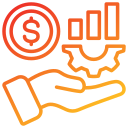Choosing the Right Tool for Your Business
Start with your sources of truth: banks, accounting, billing, payroll, and expense apps. The best cash flow management tools pull data automatically and reconcile it reliably. If integration is clumsy, your forecasts will age quickly and your team will revert to manual updates.
Choosing the Right Tool for Your Business
Insist on role-based access, audit trails, and approval paths. Cash touches everyone, so permissions matter. Strong cash flow management tools separate who sees, who edits, and who approves, reducing risk without slowing decisions when time-sensitive payments or collections pop up.





